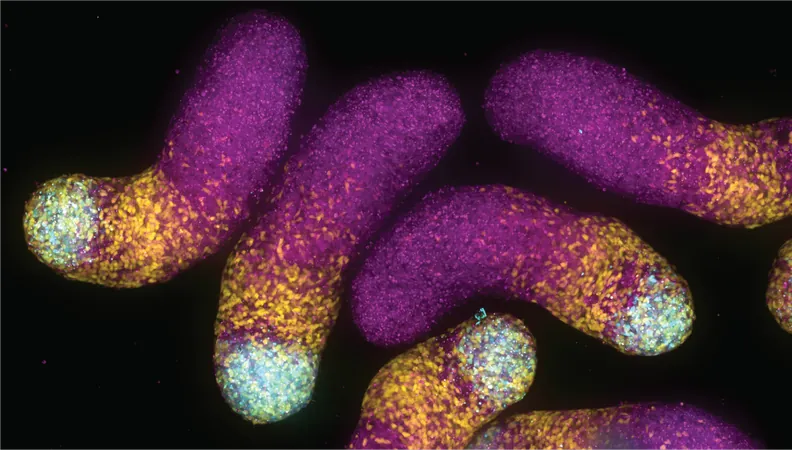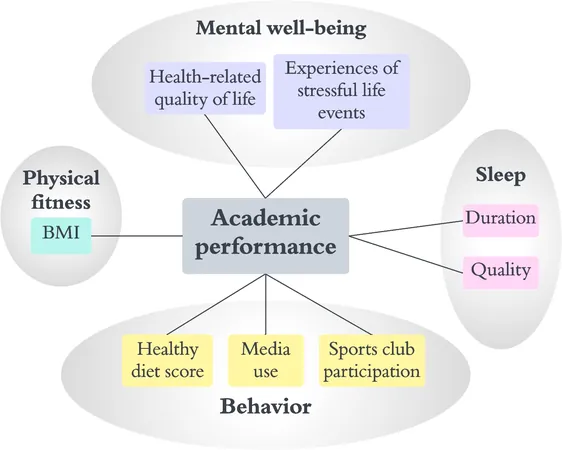
Groundbreaking Insights: Princeton Engineers Unravel the Mysteries of Embryonic Cell Organization!
2025-01-10
Author: Yu
Princeton Bioengineers Make Breakthrough Discoveries
In a stunning revelation, Princeton bioengineers have unlocked secrets surrounding the transformation of a simple ball of cells into a complex embryo—with distinct head and tail features. This transformation, known as embryonic patterning, has baffled scientists for decades, but new findings suggest that the process occurs much earlier than previously recognized. With these groundbreaking insights, researchers are poised to improve our understanding of developmental disorders.
Investigating Early Chemical Signals
The research team, led by molecular biology associate professor Jared Toettcher, began by probing a fundamental question: What are the earliest chemical signals that determine whether a cell will develop into the "head" or the "tail" of an embryo? Due to the complexities of studying mammalian cells within a living mother, the researchers turned towards innovative stem cell models that replicate certain functions of mammalian embryos.
Innovative Techniques to Detect Signals
Using sophisticated techniques, McNamara, one of the leading scholars on the team, engineered a circuit that could detect and record the crucial chemical signals received by the cells, including a vital signal known as Wnt (pronounced "wint"). This Wnt signal is pivotal in orchestrating many developmental processes in mammals and plays a significant role in embryonic symmetry breaking.
Discoveries Beyond Wnt
In an enlightening twist, the researchers made two critical findings. First, they discovered two additional signaling pathways that influence the head and tail distinction, and remarkably, these signals were detected much earlier than the Wnt signal. This suggests that changes leading to an embryo's asymmetrical structure occur at a much earlier cellular level than scientists had anticipated.
Cell Sorting Phenomenon
Furthermore, the researchers observed a fascinating phenomenon known as cell sorting, where tail cells preferentially adhere to fellow tail cells instead of mixing with other types. This allows the cells to organize spatially into distinct groups as the ball of stem cells develops. This insight corroborates theories from notable biologist Malcolm Steinberg concerning cellular organization.
Implications of the Findings
Ultimately, these findings indicate that internal cellular mechanisms, such as sorting, may play a more prominent role than outside chemical signals in determining embryonic structure. While this research offers exciting prospects to enhance our understanding of mammalian development, Toettcher cautions that the findings are currently confined to stem cell models, hinting at potential differences in their behavior compared to actual embryos.
Future Prospects
Despite these limitations, the innovative tools developed in this study hold immense promise for uncovering additional internal cues that guide essential developmental processes. This approach could revolutionize the use of stem cell models in embryo research—a venture that could lead to revolutionary advancements in regenerative medicine and potentially offer solutions for various human health challenges. Stay tuned, as this remarkable journey into the realms of embryonic biology could transform our understanding of life itself!





 Brasil (PT)
Brasil (PT)
 Canada (EN)
Canada (EN)
 Chile (ES)
Chile (ES)
 Česko (CS)
Česko (CS)
 대한민국 (KO)
대한민국 (KO)
 España (ES)
España (ES)
 France (FR)
France (FR)
 Hong Kong (EN)
Hong Kong (EN)
 Italia (IT)
Italia (IT)
 日本 (JA)
日本 (JA)
 Magyarország (HU)
Magyarország (HU)
 Norge (NO)
Norge (NO)
 Polska (PL)
Polska (PL)
 Schweiz (DE)
Schweiz (DE)
 Singapore (EN)
Singapore (EN)
 Sverige (SV)
Sverige (SV)
 Suomi (FI)
Suomi (FI)
 Türkiye (TR)
Türkiye (TR)
 الإمارات العربية المتحدة (AR)
الإمارات العربية المتحدة (AR)